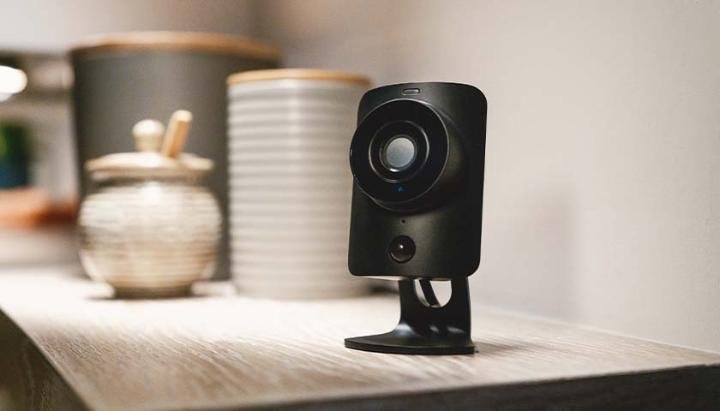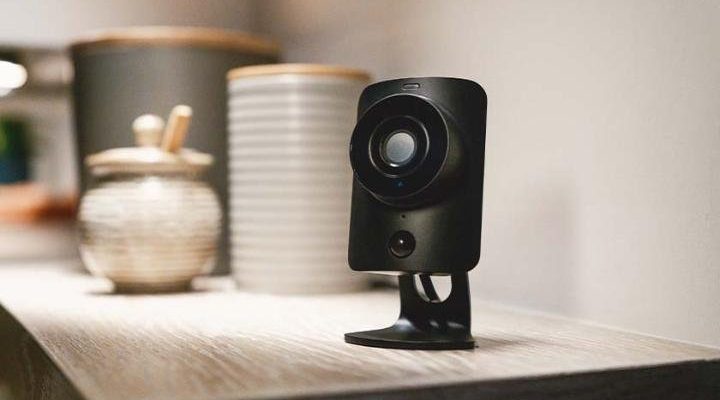
Honestly, figuring out where to find the warranty details for your SimpliSafe system isn’t as tricky as it first seems. Think of it like trying to pair your remote—there’s a clear process, a few places to check, and (luckily) you don’t need a secret code. Whether you need to replace a faulty keypad battery, swap out a glitchy sensor, or just like knowing your options, let’s break down exactly where those elusive warranty details live—and how you can use them when the time comes.
Understanding the SimpliSafe Warranty: What Does It Cover?
Let me explain how SimpliSafe’s warranty policy usually works, because it’s the foundation for any troubleshooting or replacement you’ll ever need. Most SimpliSafe security systems come with a manufacturer’s warranty right out of the box. This policy generally covers defects in materials or workmanship—meaning if something dies on its own (not because you let the dog chew the remote), they’ll fix or replace it.
Here’s the thing: SimpliSafe’s warranty isn’t a lifetime guarantee. The coverage period can change based on what you purchased and whether you’ve signed up for their monitoring plan. For example, the *standard warranty* usually lasts a year, but if you’re on an active monitoring subscription, SimpliSafe actually bumps your coverage up—sometimes for as long as you’re a paying customer. That’s pretty generous compared to universal or generic brands, which rarely budge beyond 12 months.
There are limits, though. Accidental drops, battery issues from normal wear, or trying to DIY a reset and making things worse? Those kinds of oops moments generally aren’t included. But if a keypad won’t sync, a sensor refuses to pair, or you’re having remote connection problems that aren’t your fault, you might be in luck under warranty.
Where To Look: The Best Places To Find Your SimpliSafe Warranty Policy
Now, the big question: where exactly can you find the warranty details for your SimpliSafe security system? It’s not buried in secret code or locked in a vault. In fact, you’ve got a few options, each with its own pros and cons.
- Product Box or User Manual: Most SimpliSafe systems ship with a printed booklet right in the box. Flip past the setup instructions, and you’ll almost always find a “Warranty” or “Legal” section toward the back. It’s old-school, but you can’t beat having it in your hand.
- SimpliSafe Website: Their official support page is a goldmine. Just search for “warranty” on the SimpliSafe site (simplisafe.com), or go straight to the bottom of the homepage—there’s usually a link labeled “Warranty” or “Terms and Conditions.” Bonus: it’s updated more often than paper manuals.
- Customer Account Portal: If you’ve set up an online account with SimpliSafe for managing your monitoring plan, log in and check your product details. Some users have found downloadable warranty PDFs right in their dashboard.
- Customer Support: Sometimes, a live agent is the fastest way to get the right answer. SimpliSafe’s phone and chat teams will happily direct you to the latest policy or email you a copy, especially if you mention what device or pack you bought.
If you ever lose the original paperwork, don’t panic! The website and support teams have you covered. Honestly, searching by model number on the SimpliSafe site is often faster than digging through your junk drawer.
How SimpliSafe’s Warranty Compares To Other Security Brands
You might be wondering if SimpliSafe’s warranty is really that great compared to other brands—or if you’d do better with a universal security system warranty from another company. Here’s the scoop.
Many universal home security systems don’t come with much coverage at all. Some brands only offer a basic 90-day or 1-year guarantee. SimpliSafe, on the other hand, starts you off with a year (which covers manufacturing defects, syncing problems, and hardware failures). If you’re subscribed to their monthly monitoring plan, they extend your warranty for as long as your subscription is active. That’s pretty rare. For folks who rely on their system every day, it’s a real perk.
If you’re someone who likes to DIY and mix brands—maybe you’ve got a universal remote paired with SimpliSafe sensors—know that warranties rarely cross over. SimpliSafe only covers their own branded parts. So, if you’re troubleshooting a dead battery in a generic sensor, you’re probably on your own.
For anyone looking to avoid future headaches, sticking with SimpliSafe gear (and keeping your monitoring plan active) is the simplest way to keep warranty support in your corner.
Common Warranty Issues: When Should You Use It?
A warranty is like an umbrella: you only look for it when it starts raining—aka when something stops working. Here are a few of the most common scenarios where you might need to dig up your SimpliSafe warranty policy:
- Device fails to sync or pair: Maybe your keypad won’t code with the base station, or a sensor refuses to communicate no matter how often you reset it. If it’s not user error, that’s probably covered.
- Remote or sensor malfunctions: A button gets stuck, the remote stops responding, or a sensor randomly triggers alarms (without a battery issue to blame). These types of hardware failures usually fall within warranty limits.
- Batteries die too soon: If you’re burning through batteries at lightning speed within a few weeks, it’s possible there’s a hardware flaw rather than normal wear. While batteries themselves aren’t always covered, faulty hardware that drains them quickly might be.
- Error codes that won’t clear: If you keep seeing the same troubleshooting code, even after you follow every reset, pair, and repair step in the book, something deeper might be wrong—and it’s worth checking your warranty.
Here’s what matters: don’t wait until your system is acting up for months before you check if you’re covered. The sooner you notice a persistent issue and flag it with SimpliSafe, the better chance you have of a quick fix or replacement.
How To Read and Understand SimpliSafe’s Warranty Policy
Here’s where people get tripped up: warranty policies aren’t always written in plain English. Even SimpliSafe’s is a little “legalese” in places. But it’s worth reading (and not just the bolded parts). Here’s how to decode what you’re looking at:
- Coverage period: Check how long your hardware is covered. Is it only a year, or are you on a plan that extends it?
- What’s included/excluded: Look for sections that say “This warranty covers…” and “Does not cover…” They’ll call out things like batteries, physical damage, or third-party devices.
- How to claim: Is there a code, RMA, or support ticket you need to start the replacement process? It’s usually spelled out step by step (and yes, you’ll probably need your purchase receipt or account info).
- Return vs. repair: Sometimes, SimpliSafe will guide you through troubleshooting first. If a reset or battery swap doesn’t work, they’ll then start the replacement process.
If you’re ever confused by the legal terms, don’t hesitate to call or chat with support. They’ll walk you through what it all means for your specific device and situation.
How To Make a Warranty Claim With SimpliSafe
Let’s say you’re out of luck after code troubleshooting, resets, and every pairing trick you know—your system is still acting up. Here’s how you actually use the warranty:
- Gather your info: Find your purchase confirmation email or receipt, your SimpliSafe account details, and the serial numbers for the devices in question.
- Contact support: Head to the SimpliSafe support page, or call their customer helpline. Be ready to explain exactly what’s wrong, and what you’ve already tried (reset, battery swap, troubleshooting steps—including that remote issue that kept you up late).
- Follow their process: SimpliSafe may walk you through a few more tests. If your device still fails, they’ll give you instructions for returning or exchanging it. This might include an RMA number, shipping label, or a new device shipped straight to your door.
Honestly, it sounds more complicated than it is. Most claims are simple if you have the right info ready. The key is patience and clear explanations—you’d be surprised how much faster things go when you jot down your troubleshooting steps beforehand.
Tips for Keeping Your SimpliSafe Warranty Valid
Warranties are only as good as your ability to use them, so here are a few ways to keep your SimpliSafe coverage safe:
- Don’t modify your hardware: No matter how tempting it is to open up your remote or sensor to “see what’s wrong,” doing so usually voids the warranty. Stick to official troubleshooting steps.
- Keep your subscription active: As mentioned earlier, SimpliSafe rewards active monitoring customers with extended coverage. If peace of mind matters to you, make sure your plan never lapses.
- Save your purchase records: Email receipts, invoices, and order confirmations all help prove when you bought your system. If you ever need to make a claim, this saves you time and headaches.
- Use only official accessories: Mixing in third-party batteries, remotes, or sensors can void your policy. Stick with SimpliSafe parts to keep everything in the clear.
Little steps now can save you a lot of code reading and troubleshooting later on.
What To Do If Your Warranty Has Expired
So, what if your SimpliSafe warranty is over? Don’t toss your system just yet. There are a few backup options to keep your home secure:
- Replacement Parts: SimpliSafe sells most accessories, remotes, and sensors separately on their website. Sometimes it’s easier (and cheaper) to swap out a dead part than replace the whole setup.
- Third-Party Repair Shops: For older systems or out-of-warranty issues, local electronics shops may be able to help—just know this is at your own risk, and not officially supported by SimpliSafe.
- Upgrade Opportunities: If your gear is ancient, SimpliSafe sometimes offers upgrade deals or discounts to loyal users. It’s worth asking support if you qualify.
No warranty lasts forever, but that doesn’t mean you’re out of options.
In Closing: Why It Pays To Know Your SimpliSafe Warranty Policy
When all is said and done, your SimpliSafe warranty is like the spare key hidden under the mat: you might never need it, but you’ll be glad it’s there. By knowing exactly where to find your warranty details—whether in your manual, online account, or a quick call to support—you’re setting yourself up for less hassle if things ever go sideways. And if you keep your subscription active, don’t mess with your hardware, and save your records, you’ll have no problem getting help when you actually need it.
If you ever feel lost or overwhelmed by codes, resets, or troubleshooting steps, take a breath and use the resources SimpliSafe provides. Your security system should make life simpler, not more stressful—and a clear, accessible warranty is one small but mighty part of that peace of mind.
